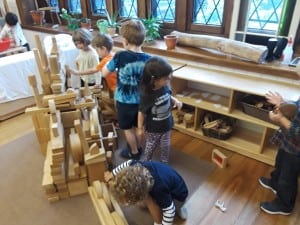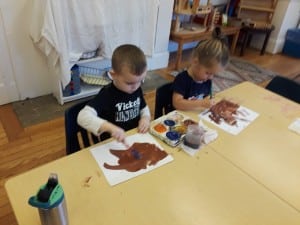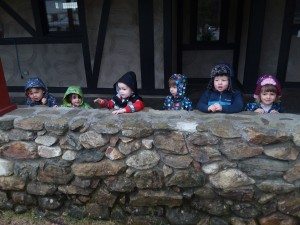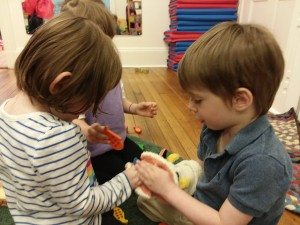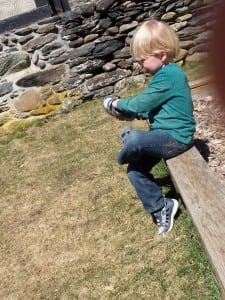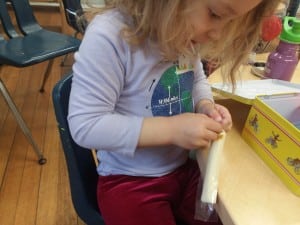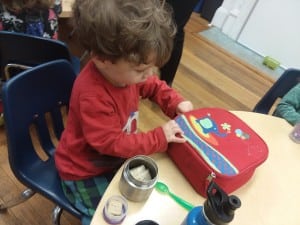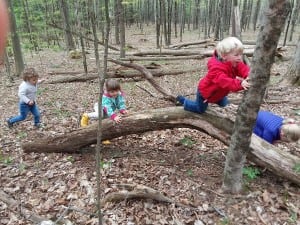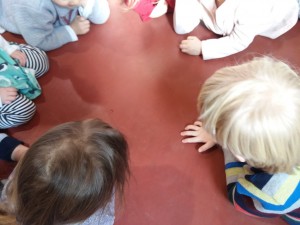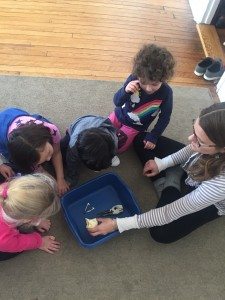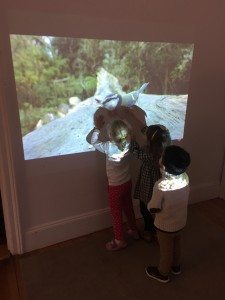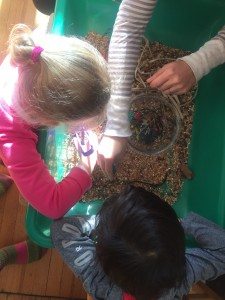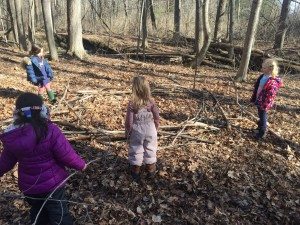Starting the School Year With a BANG!
On just the third day of school, nature provided the Preschool class with such an exciting and memorable event. While the children were in their very first gym class, a powerful thunderstorm rolled in.
We had wind. We had very bright lightning and very loud thunder. We had torrential rain.
We had a shared experience.
The thunderstorm hung around for a while, so the children were “stuck” in the gym – a pretty good place to be stuck, with Mr. Storti, and Kristina, and plenty of balls and hoops to play with. When Dr. Segar made the rounds around campus to check on everybody, he stopped in to see them. He comforted a frightened child and listened to another who had a lot to report.
Meanwhile, I was “stuck” back in the classroom. When the wind came up, I frantically ran around closing windows, which had been wide open against the stifling heat. Eventually, after the lightning and rain subsided, I walked over to the gym to join the children.
In the end, even the families got to share in this unusual event. At pickup time, the lightning was gone, but it was still raining. So parents or grandparents had to find us at the gym to take us away under the cover of umbrellas.
The next day, what did we talk about at Morning Meeting? The rainstorm! What IS rain? Why does it rain? What do we find on the ground in the rain? What do we like to do in the rain? The children had a lot to say.
We read books: Rain Drop SPLASH by Alvin Tresselt, wherein rain grows into a stream, which grows into a river and into the sea. This led to a discussion of boats.
In one of our discussions, somebody shared their knowledge that sun and rain together make a rainbow. Oh gee, we HAD to read Sky Fire by Frank Asch. Somebody asked the big question: Why does a rainbow disappear? At nap time, the children notice the rainbows on the floor, made by the prisms hanging in our windows. What makes that rainbow? Hmmm….
Just like that, in the blink of a thunderstorm, a project was born. Our class will continue to explore water and things related to water. Already they are expressing their knowledge of water and storms through language – “sprinkle,” “pour,” “wet,” “soaked,” “gushy;” through art – one child dots paint on paper to make rain, another swirls paint with a brush to make wind; through building – every day a new kind of boat.
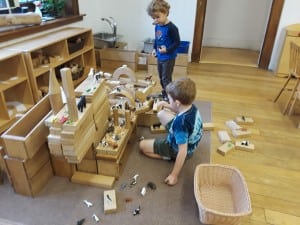
Two children work on a “zoo boat.” After classifying the animals, they assign them different living spaces.
Now, instead of frantically closing windows, I am frantically trying to record their words on paper; save their artwork; and capture their constructions with a camera. I struggle to keep up with their free and agile activity. My teacher-brain struggles to keep up with so many ideas of ways to provoke their curiosity and imagination. We have a stream and a pond to visit, mud to find, water droppers to play with, paint to blow, a rainbow to construct, more boats to make.
This is Reggio-Emilia: Environment is the third teacher. Teacher and students explore and learn together.

